The “Just for Kids” Excuse: Analyzing Animation in Modern Entertainment
The topic of what makes any television show, movie, and video game as just “kids’ stuff” has been a topic of debate for a long time. Yet no one has come to a solid conclusion of what separates the childish entertainment from the adult variety. The reason to discuss this issue is that many people get the wrong impression of what defines the two. Often enough, some people claim to know what is meant for children only and adults only. Where unfortunately the misunderstanding of the defined demographic can lead to problems and criticisms of the product, when in reality it is our own fault for not analyzing the product before jumping to conclusions. This is often noted with the medium of animation, as the best way to talk about this topic is by looking at the works of Walt Disney Studios.
For years since the company’s creation, people always associate Disney with animation. They are famous for their cartoon shorts and numerous animated films. Mostly based off of fairy tales with some changes for a movie-going audience, told with engaging characters and memorable songs. Disney’s legacy lives on in the memories from our childhoods and when we become adults, we pass them on to family and friends in the hopes that they will enjoy the stories in a similar way. However, because of the medium and tropes that Disney is known for, many people quickly assume that since those various movies are animated, that must mean they are just for kids. The problem with that mindset is because of two reasons, which many might be ignorant about or choose to ignore.
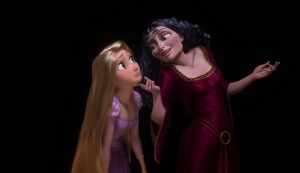
Firstly, many Disney films contains certain themes or elements that make the story much deeper or adult than they realize. In Tangled (2010) for example, the villainess Mother Gothel can be seen as the typical evil parental figure who uses Rapunzel for own needs. She keeps herself young by making Rapunzel’s hair grow longer and longer, while convincing her “daughter” that the world is cruel and that only her mother can protect her, ensuring that Gothel will never lose her personal fountain of youth.
On a deeper level, when analyzing the villainess, Gothel’s character can actually be seen as an overbearing parent who creates such a psychological grip on “her” child through years of emotional manipulation and guilt trips. The results show when Rapunzel gets out of the tower, she goes back and forth from being extremely happy and excited, to a traumatized victim who is convinced that she is an awful person for breaking her “mother’s” trust. To the audience, the mood swings can be seen as comical. However, when analyzing Rapunzel’s emotions and expressions in that scene, her actions give a horrifying reminder that there are people who are capable of leaving such mental scars on a person. Giving Mother Gothel, who has a simple design, a terrifying presence as a mental abuser. Thereby presenting an adult story element in a modern adaptation of what could be seen as a children’s story.
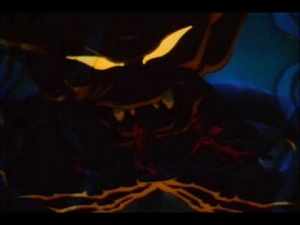
Second of all, there are scenes that can either be too scary or intense for young children. For Disney, this can be dated back to the late 1930’s when the studio began making films that contain sequences that are famous for being horrifying. For instance, the panic attack scene from Snow White and the Seven Dwarfs (1937), in which Snow White hallucinates that the dark forest is coming to life. To Pinocchio (1940) where the boy Lampwick literally turns into a jackass as he cries out for his mother in fright. Even to Fantasia (1940) with the famous segment, Night on Bald Mountain, where the devil’s presence alone is enough to be intimidating to audiences of all ages.
Despite Disney making many scary moments throughout their filmography, their films are still branded with a G rating rather than a PG rating, and are deemed appropriate for very young boys and girls because of that. What film did the ratings board see to claim that a film with such scary moments to be deemed appropriate for very young children? Now that is not to say children can not enjoy the films referenced here, each one finds a way to balance the lighter moments with the dark ones. Walt Disney himself always intended his films to appeal to audiences of all ages, for he knew that they would have been doomed to fail if they focused only on one target demographic. But the question still remains, why is it that films with an intention to appeal to all age are still considered just for kids?
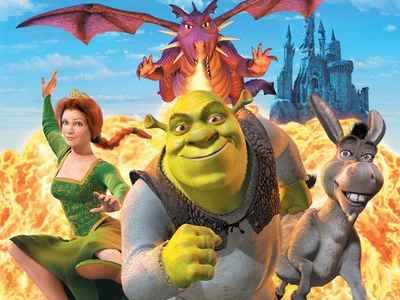
When analyzing what Disney does to appeal to all audiences, despite people still claiming that nearly all of their products are childish, one does wonder if it is because of the content within the films. This brings us to one of Disney’s biggest competitors, Dreamworks Studios. One of the founding members of the studio used to be a CEO for Disney, Jeffrey Katzenburg. Katzenburg produced many animated films, which, in a sense, have the same appeal towards audiences as Disney would, but with a different “edge”. I say that because Katzenburg’s strategies for marketing always tries to appeal to an older audience with an “edgier” appeal.
Films from Dreamworks are sometimes darker, with occasional offensive language, and most notoriously of all, dozens of pop culture references. And with those traits there is no bigger example that set the new standards for animated films than DreamWorks’s Shrek (2001). The film’s success set the standard for what older audiences believed they wanted. Beyond 3D animation overtaking the legacy of 2D animated films, the heavy usage of “adult humour” started to overtake films and eventually wore out its welcome fast. One of Dreamworks’s most obnoxious films, Shark Tale (2004) stands as a prime example.
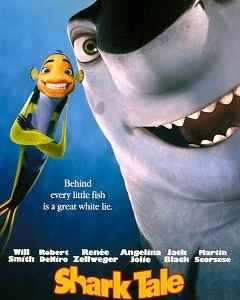
Made as a counter-film to Pixar’s Finding Nemo (2003), Shark Tale presents itself which that can be compared to an obnoxious 90’s children’s commercial. Starring big name celebrities such as Will Smith and Jack Black, it references instead of referencing, characters saying catch phrases and one-liners, topping it all off with many insufferable puns based off of other celebrities. With “Mussel Crowe”, serving as an example of a bad joke based off of Russel Crowe’s name. Shark Tale as a whole, is a film that went too far with trying to appeal to an older audience, resulting in the targeted demographic question if this is what they truly wanted in an animated film.
Ultimately, this leads to the counterpoint that every time a film tries to be more adult in a film that is aimed towards families, it makes the film much more childish in the end. Even Disney’s attempt to appeal to a more adult audience, with their 46th animated feature Chicken Little (2006), caused the film to be bombed at the box office. Eventually, both studios managed to tone down their attempt to be “edgy” which led to big successes from both sides such as Frozen (2013) from Disney and How to Train your Dragon from Dreamworks (2010). Despite these films telling compelling stories with strong characters and having deep themes, they are still considered just for kids by today’s society.
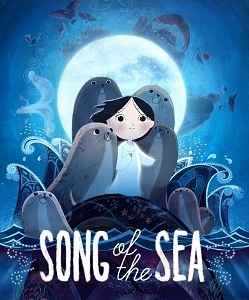
In the end, people unfairly judge them because they are not realistically compared to the live action films. Whenever marketing tries to make the film more edgy for adults, it makes the product more immature as a result, convincing audiences even further that animation will always be just for kids. This leaves to the question to ask, when the usage of animation can be used to tell stories and create characters in many ways that reality cannot create, why criticize the fantasies for not being realistic like our world?
We go to movies for the stories, characters, worlds, and escapism as a whole, and the medium of animation is just as sophisticated as any well-respected cinematic masterpiece, by, more often than not, telling stories that the filmmakers want to tell. There will always be room for silly animated movies, along with the clever, vulgar, or goofy live-action comedies. However, until we drop the backwards, narcissistic mindset we have created amongst ourselves that animation can never be mature and adult. We can never move forward towards a more creative and open place to share and enjoy in animation. Those who view animation as such should think very carefully about what we define as mature and adult, instead of listening to the definitions or claims of others.
What do you think? Leave a comment.
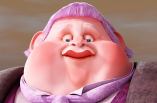
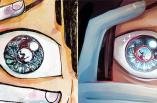


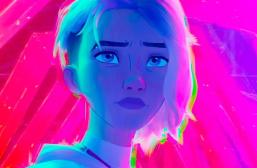
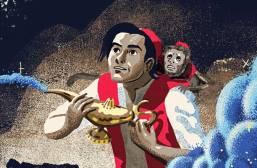
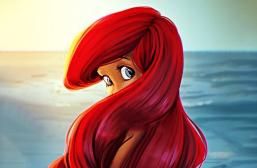
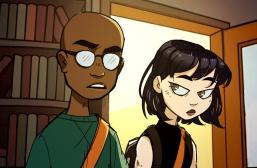
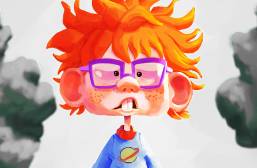
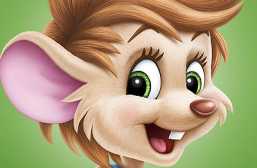
Don Bluth, creator of The Land Before Time, once said that kids can take anything scary or sad, as long as the film has a happy ending. Your article definably shows why kids are not so dumb as adults take them as. Recently watching Inside Out, I feel the film totally nailed how to treat kids with respect, and how the message can relate to kids and adults.
Loved reading this and enjoyed every point being made. I have the exact same problem getting my parents to watch any animated film, even the Disney films. Thank you for writing this article and I will pass the message on.
Love your article. You’re right Ryan. Too many adults think animated films are for kids. However, I believe they are not adults but rather – grownups; grownups who have forgotten how to play. They have become de-sensitized which is a shame because they’re kind of missing the point – A great story comes in many forms.
I agree with your statement: “…the medium of animation is just as sophisticated as any well-respected cinematic masterpiece…”
So hats-off to animated creativity. This medium is a great way of presenting a poignant multi-generational message (or two). They leave us with “things to think about”.
Love your analytical approach. Look forward to your next article.
agreed! treating the audience with respect no matter their age! good story telling for all! yes!
You’ve nailed it with your point that adults treat animation for kids because it’s not seen as ‘realistic’. But who makes these animations? Adults! It’s not as though children are running the studios – I think as long as a story is compelling and the characters are relatable, then animation shouldn’t be snubbed just because it’s considered ‘childish,’
This reminds me of the Little Prince, in which the character explains that adults are always curious about facts – how much does one make, what are they studying, where do they live, etc. It seems not many adults access their imagination anymore, which is sad because feeling young is how you keep your youth!
This might be going off tangent, but I just wish animation could be appreciated for the medium it is.
Often Japanese films (Studio Ghibli, etc…) or other foreign ones (2010’s The Illusionist for instance) are good examples of very preconception-smashing, more adult, less profitable animated films; as are darker stop-mo films (Coraline was definitely *not* a film for children).
That I do agree with there, but I was thinking of leaving that for another topic and instead wanted to focus on North American animation in this analysis.
I’m sorry, but how is Secret of Kells or Song of the Sea North American? Or did you think not mentioning them in the text would excuse the usage of their posters?
On a sidenote. Maybe I’m simply not informed enough to say this, but ( apart from Coraline, Burton and Anomalisa) it seems most American animations do in fact consciously cater to the “kid- mid teen” demographic. If the filmmakers themselves consider “adult”(by the general definition of the word) animation as not viable by way of not being profitable enough, then it truly is a sorry affair.
my kids are happy
Animation can be a medium and a sophisticated great story-teller. But unless a person is involved in the industry or a following fan, I think a regular bystander could easily presume “cartoons = just for kids”.
Over the last 20 years I think we’ve seen an evolving process in the storytelling of animated films and bigger risks with characters, depth, and drama.
Now I’m curious to know how many movie-goers who saw “The Adventures of Tintin” were considered “kids”. Would it be considered a children-focused animated film? A lot of Disney/Pixar films get pitched as “family friendly” which means, I presume, that adults can enjoy them as much as the tots in the front row.
I find it interesting how DreamWorks managed to even try competing with Disney. I sometimes underestimate them as a company when doing so is a mistake. The dynamic you mentioned between Shark Tale and Finding Nemo and even Chicken Little is interesting too. Here’s to hoping DreamWorks doesn’t try making a Shark Tale 2 in response to Finding Dory 😀
Some ‘kids’ animations have given me feelings that plenty of ‘grown up’ animations failed to deliver.
The animation renaissance we’ve been in over the past few years has been great for diversity – and hopefully in broadening people’s opinion.
Some animated films are definitely for children and meant to be light-hearted and cute but even “Bambi” and “Dumbo” had scary terrifying moments. But that doesn’t detract from their main target audience. A lot of the fairy tale films with princesses are a shoe-in for marketing to little girls too.
People who think animated movies are only for kids have obviously never seen Princess Mononoke, Grave of the Fireflies, or Akira.
I think if people took the time to actually analyze the animation films that are considered ‘family friendly’ they would realize how they relate to adult audiences, but they do it in more subtle ways. There’s a reason why ‘family’ is a target audience; there is something there for everyone of all ages.
Very good article!
Nice take on animated films!
Interesting to contrast the works of Disney/Pixar/Dreamworks against masterful work by Studio Ghibli, much of which is not pitched to suit Western tastes. As an adult I find myself much more engaged by these films even if they aren’t gag-packed. Equally, my teenage daughter’s appreciation for them is as strong as when she first watched Howls Moving Castle at 6 yrs.
It sounds like a tough challenge from a marketing POV to sell the movie to adults as much as kids.
To write Disney as kids’ films off has at least some minor credence, to write animation off is horrendously overgeneralising.
Brave! I loved that movie and I’m 24!
I’m contesting the opinion that they’re films that kids enjoy and parents sit through to pacify them.
I love this artical and its exactly the kind of agurments and options I wanted to read.
I don’t know why there isn’t a studio who wants to produce true adult type animation. But I have a theory that Pixar’s new “Inside Out” was that beginning bridge.
It was an artful, colorful, and yet powerfully deep connection of we are the same.
Wonderful read!
Fairy tales, and their modern day equivalents (movies, books, computer games etc.) have always sprung from the imagination of adults. So it is not surprising that they come with the primordial fears of childhood as well as referencing the more adult experiences and lessons of life. All characters undergo changes through learning from their ordeals, which give rise to the inherent morals within their story. Since time immemorial, morality has been taught through fear; ie. ‘If you don’t do this see what will happen to you’. The greatest example, of course, is The Bible, especially the first testament. After all, what is Hell -if not the ultimate punishment for non-compliance? Controlling behaviour through fear has always been the way that adults bend children and each other to their will. And what better way, than to wrap up your message in a yarn. Subliminal indoctrination is not new!
I really enjoyed the article, and I can see your point of view.
But I also see it differently. Life in itself is scary. There’s those moments that make your heart stop, or go incredibly fast. And any movie itself has those climaxes and declines.
The older movies of Disney, I can agree and say that they are, sometimes, terrifying. But as a child watching, I don’t remember it being terrifying.
I remember the movies being an elaborate story where I got attached to the characters. I let my imagination flow with the movie, especially the movie Fantasia.
Looking back, we can for sure see how scary something was, or how bad it was in retrospect. But as a child experiencing it at the time, it’s a fresh new experience that they wouldn’t dissect right away.
A lot of animation is targeted towards kids in places – even Pixar films have the odd cheesy kid’s joke.
I’m really glad you wrote this article- it frustrates me to no end that people can’t accept that children can in fact deal with difficult material. Too often I see people reacting to any sort of animated conflict with some form of “OMG, I thought this was for kids!!!” News flash: kids have emotions, they deal with obstacles and tragedies, and they’re human too. It is absolutely possible to ceate media that people of all ages can relate to at once.
Huge fan of most things animated. I believe all animation can be enjoyed by adults it just depends how one looks at it. The cartoons made for kids can be enjoyed by adults but the opposite isn’t true. Your right about production companies trying to walk the line between adult and kids content turning out horribly. Pick a target (adults/kids) and go for that. With the writers, directors, and everyone else that produce a cartoon being adults there will always be some part it for an adult mind to analysis.
I am sorry that I am getting to read this article so long after it was published! I think you really have made some solid points here and have taken the reader through reasons why kids animation is not strictly for children. I especially like the way you call out some films for being intentionally adult which caused them to suffer.
I agree entirely with what’s being said here – between Disney’s animated films cornering the family market for so long and competing companies’ botched attempts at skewing the medium towards older audiences,forms of animated film have been unfairly pidgeonholed as children’s media. Animation, like anything else, is merely a means of telling a story – that story, like any, can appeal to any audience the creators make it for. Marginalizing an entire form of expression in that way is limiting, and unfortunate for animated film in general.
I really enjoyed who you highlighted Disney as having a huge influence on how we perceive animation as a children’s medium. However, if you wanted to bring it full circle you could have started with the three animation powerhouses in the early 1900s (Fleischer Studios, Warner Bros. and Disney) and focusing on their demographics and how Disney came out on top. Also, I was expecting more modern animated programs spanning over both film and television. Over the Garden Wall (2014) is one of my favorite animated miniseries and it holds some very though provoking themes as well as stunning visuals. Persepolis (2007) is another animated treasure, but it certainly not for children. Not because of content, but concept. The film is about the Iranian Revolution in the 1970s and it’s done in this simple black and white style. No graphic violence, no nudity, barely any swearing (also it’s in French, so yeah) yet it conveys the trials of living in Tehran during this conflict.
Don’t let my long winded comment fool you, I really did enjoy your article! Just remember, animation, even American animation, spans decades with hundreds attempts of trying to make it “adult” whether that’s adding sex in Fritz the Cat (1972) or pop culture pandering in Shark Tale (2004).
Aside from animated movies that are primarily directed at kids, the idea that animation is automatically meant for kids can really confuse people when they’re met with animation NOT intended for kids. I saw the movie ‘Anomalisa’ in late 2015, and there were children in the theatre because their parents assumed it was a kids movie.
It almost feels like the fact that animated movies are in their own category at the Oscars, and that category is always dominated by movies aimed at kids, discourages filmmakers from using animation as their medium for general films.
Animated films are for the immature low educated citizens, adults with unsophisticated brains from low socio-economic strata. They have no desire or ability to think deeply so simple cartoons entertain them. That’s the America we live in these days. Dumbed down to the third grade level.
Movies are made for our entertainment. So, as long as a movie is entertaining to me I don’t think we should label it as a “kids only” movie. I happen to like a lot of animated movies. They are generally lighthearted and the themes in them are often deeper than most people realize. Personally, I think they have to be since parents will inevitably end up seeing the movie almost as many times as their kids.
I don’t know I think most 3D animated movies are for all ages kids and adults can enjoy in my opinion…such as moans frozen kung fu banda series coraline ..etc has a mature tase believe me…this movies has deep storylines and mature characters at some point ..my family as a whole are 30 person and we all love 3D animated movie and we don’t have kids we are all teens and adults
I think people believe animation is for kids because of what they are exposed to as a kid. This has led to the misconception that animation is ‘kids only’. Even some older children and teenagers think this, and this is wrong!
Personally, I love animation movies. They are just not so ambiguous and they aren’t as serious a live action films. Live action films are great, too, though. I just think people need to think more positively about animation
I couldn’t agree more! People who look down on animation (and its adult fans) are trying too hard to look refined and mature and that probably means they’re really just compensating for their insecurities about being capable and adult enough. I’m going to be honest and admit that a good 90% of my favourite films are considered kids entertainment. Do I care? Not at all! Firstly, everybody likes what they like. Secondly, that the beauty of true adulthood; you are free to choose your preferred entertainment. Thirdly, I do my job, I take care of my chores and I can unwind however I want to.